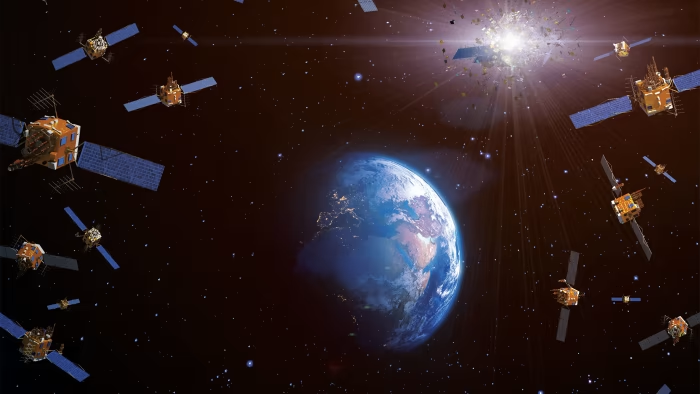The race for satellite internet dominance is heating up, with major players like SpaceX’s Starlink, China’s satellite initiatives, and AST SpaceMobile all vying for a larger slice of the pie. From revolutionary laser tech to new spectrum deals and next-gen satellite capacities, the future of global connectivity is being shaped in space. Here’s what’s happening and why it matters.
What’s Happening & Why This Matters
Starlink’s Expansion: Free Wi-Fi on United Airlines
Starlink isn’t sitting idly by. SpaceX’s satellite broadband service is expanding rapidly, with its next milestone being free Wi-Fi on United Airlines flights. Starting in spring 2025, United passengers will enjoy fast and free in-flight Wi-Fi, courtesy of Starlink’s low-latency satellite constellation. This service will initially roll out on smaller regional jets but is expected to extend to United’s entire fleet, including long-haul international flights.

United’s decision to adopt Starlink for its in-flight connectivity is a win for SpaceX, solidifying Starlink’s presence in the airline industry. Thanks to Starlink’s low-orbit satellites, the airline’s passengers are expected to experience significantly faster Wi-Fi speeds than traditional satellite services.
SpaceX Teases 1Tbps of Download Bandwidth on V3 Starlink Satellites
SpaceX is pushing the limits with its new generation of Starlink satellites. The company has teased that its V3 satellites will offer a staggering 1 terabit per second (Tbps) download bandwidth. This is a sizable leap from the previous V2 mini-satellites that only provided 96 Gbps download capacity.
The V3 satellites, launched via SpaceX’s Starship, will also feature 160 Gbps uplink capacity. This is more than 10 times the downlink and 24 times the uplink capacity of the V2 minis. The new satellites will improve Starlink’s ability to offer gigabit-speed connections to users, a significant boost for the satellite internet service.

This development positions Starlink to handle the growing demand for high-speed internet, especially in underserved regions. Each Starlink V3 launch will add 60 terabits per second of network capacity, more than 20 times the capacity added by previous launches. SpaceX is already serving over 4.6 million active customers globally. With plans to increase its production capabilities, it plans to keep expanding rapidly.
AST SpaceMobile Acquires Spectrum for Cellular Satellite Service
While SpaceX expands Starlink’s capabilities, AST SpaceMobile is making moves to offer cellular satellite service. For $113 million, AST secured a 45MHz block of L-band spectrum in the US and Canadian markets, allowing it to independently provide satellite cellular services without relying on telecom giants like AT&T or Verizon.

This acquisition means that AST SpaceMobile can offer satellite-based mobile services with peak speeds of up to 120Mbps. It marks a crucial step in AST’s mission to deliver global cellular connectivity via satellite, especially to remote and underserved areas. However, the company still faces challenges, such as redesigning its satellites to integrate the new spectrum and gaining regulatory approval for full-scale operations.
China’s Laser Tech to Compete with Starlink
While SpaceX continues dominating with Starlink, China is developing its satellite internet technology using lasers. Chang Guang Satellite Technology, a Chinese firm, recently achieved a breakthrough with a laser-based system that can transmit 100Gbps of data from space to Earth.
This technology could revolutionize satellite internet by offering faster, more efficient data transfer, overcoming the bottlenecks in traditional communication methods. While SpaceX has used lasers for inter-satellite communication, Chang Guang’s system is the first to beam high-speed data directly to the ground

China’s advancements in laser tech and its growing satellite network could position it as a serious contender in the satellite internet race. Although lasers struggle with atmospheric interference, Chang Guang has developed solutions to mitigate this, making it a significant development to watch.
TF Summary: What’s Next
The race for satellite internet supremacy is accelerating, with SpaceX, AST SpaceMobile, and China all making strategic moves to capture market share. As the players in the satellite internet space continue to compete, consumers stand to benefit from faster, more accessible global connectivity. The next few months and years will determine who leads this race and how these innovations shape the future of internet access worldwide.
— Text-to-Speech (TTS) provided by gspeech


